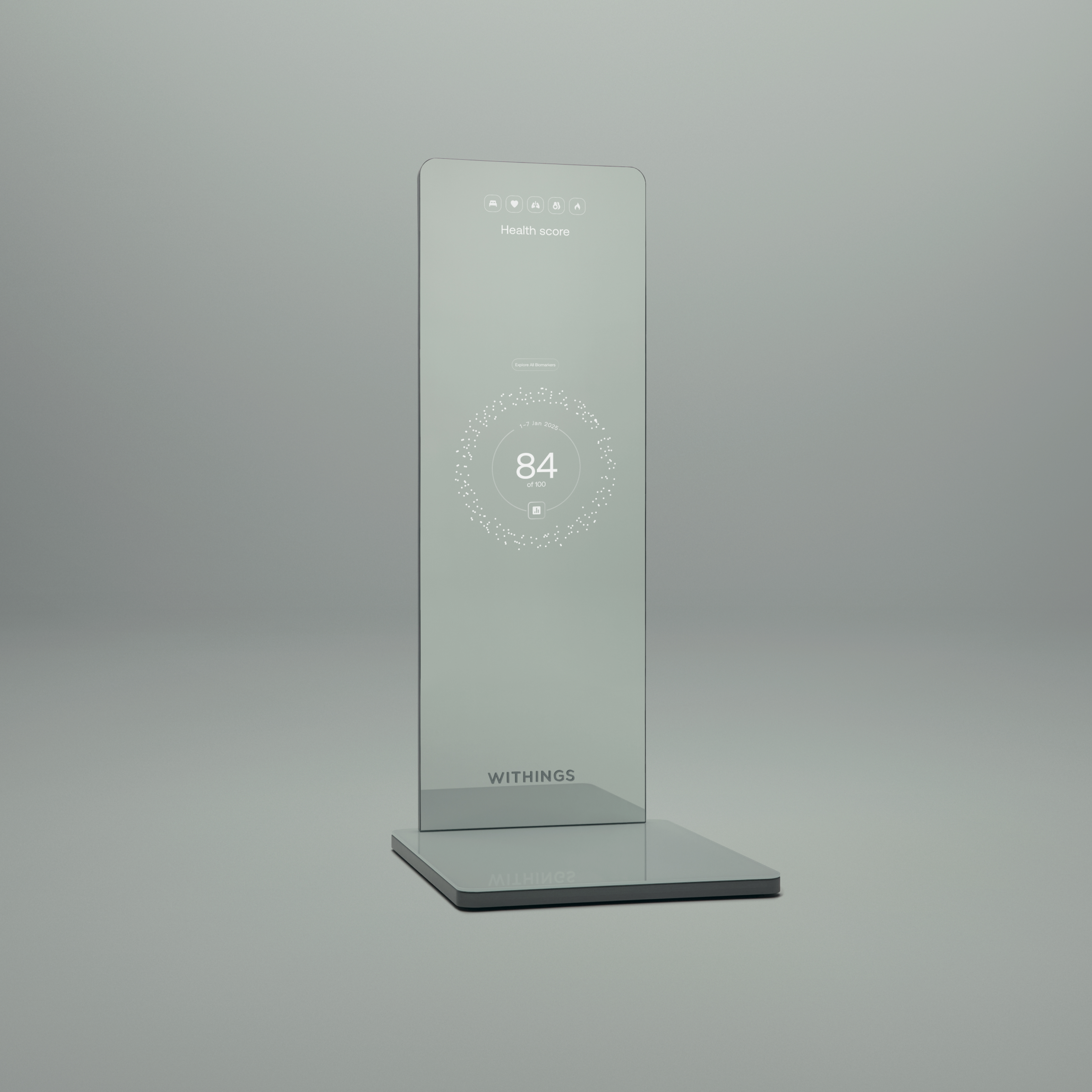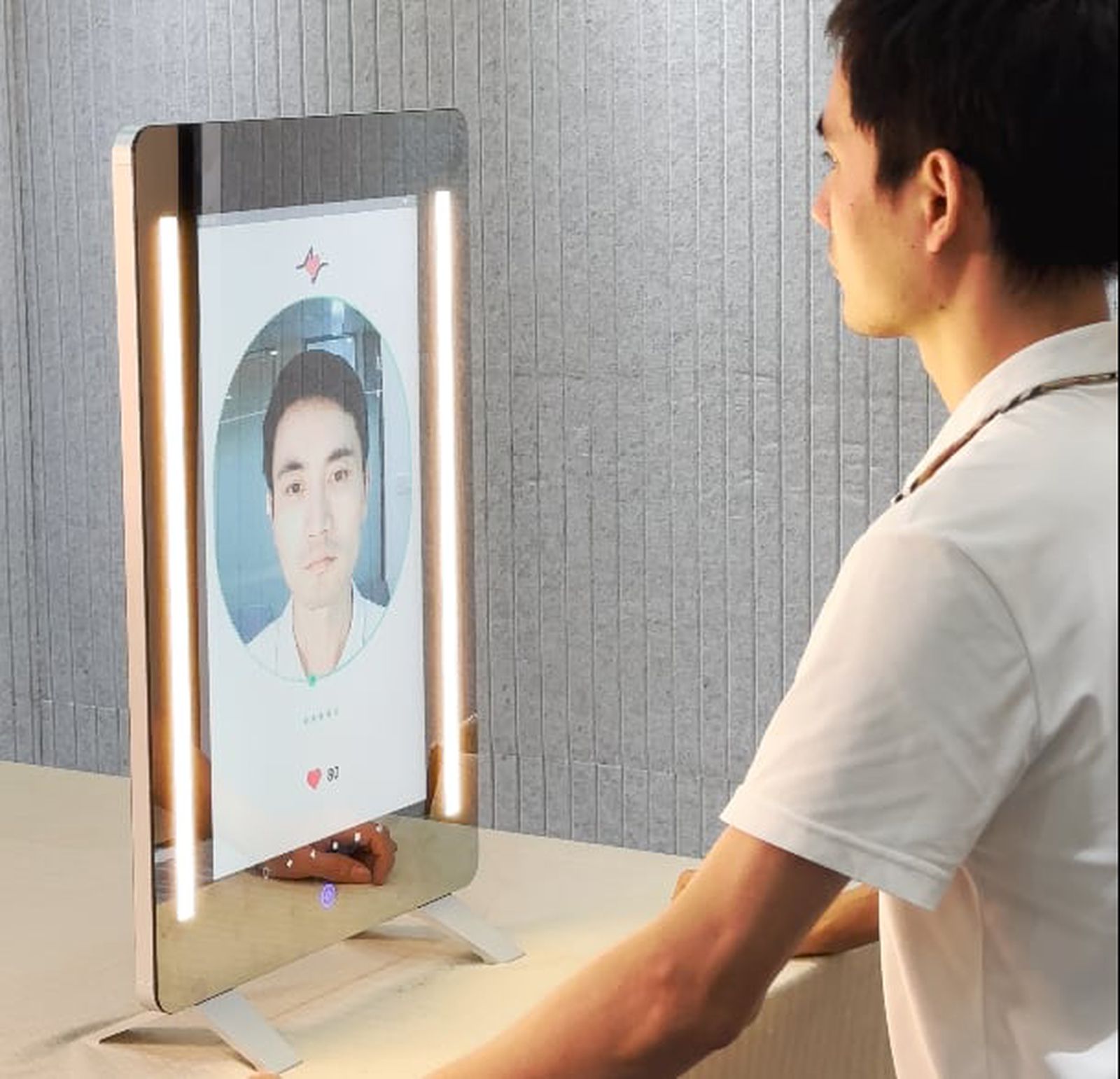Beyond the Reflection
How the Internet-of-Mirrors is Shaping the Future of At-Home Health
The Dawn of Smart Health Reflection
Imagine starting your morning routine by stepping in front of your bathroom mirror, only to receive a comprehensive health assessment in just 30 seconds. Your reflection reveals not just your appearance, but your blood pressure, heart rate, stress levels, and even early health risk indicators—all without wearing a single device.
This is the revolutionary vision of the Internet-of-Mirrors (IoM), an interconnected ecosystem of smart mirrors equipped with advanced sensors, artificial intelligence, and communication capabilities that transform everyday reflective surfaces into powerful health diagnostic and wellness hubs.
Academic research defines IoM as “a unified visual platform that integrates autonomous systems with health and beauty services through smart mirrors with sensing and communication capabilities.”

See the Technology in Action
Withings Omnia: Full-Body Health Scanning
Demonstrated at CES 2025, the Omnia provides 360-degree body scanning with AI-powered health analysis.
NuraLogix MagicMirror: Facial Blood Flow Analysis
Using Transdermal Optical Imaging (TOI™) technology to extract health data from facial blood flow patterns.
Market Viability and Revolutionary Growth
Projected Market Size by 2034
Annual Growth Rate (CAGR)
Health Parameters Monitored
Business Models
-
Hardware Sales: Premium smart mirrors ($2,000-$5,000+ for advanced models)
-
Subscription Services: AI health analysis, telehealth integration ($9.95-$99.95/year)
-
B2B Applications: Hotels, gyms, clinics, luxury real estate integration
-
Data Analytics: Anonymized health trends and wellness insights
Market Drivers
Rising Health Awareness
Consumers increasingly seek proactive health monitoring solutions
Aging Population
Growing demand for at-home health monitoring for elderly care
Telehealth Expansion
Integration with remote patient monitoring systems
The Current Landscape: From Concept to Reality
Current Market Status
While basic smart mirrors displaying weather and news exist, advanced diagnostic mirrors for home use are still emerging. Most current IoM technology is in the conceptual or B2B pilot phase, with consumer availability expected within 2-3 years.

Withings Omnia
AI-powered full-length mirror providing 360-degree body scans, weight analysis, heart and lung health monitoring, and ECG capabilities.

NuraLogix Anura MagicMirror
Uses Transdermal Optical Imaging (TOI™) to analyze facial blood flow, providing over 100 health parameters in 30 seconds.
Technology Capability Comparison
Comprehensive Health Monitoring Capabilities
Vital Signs
- Blood Pressure
- Heart Rate
- Breathing Rate
- Body Temperature
Mental Wellness
- Stress Levels
- Mental Fatigue
- Mood Analysis
- Sleep Quality
Body Composition
- BMI Analysis
- Muscle-to-Fat Ratio
- Visceral Fat
- Weight Trends
Risk Assessment
- Heart Attack Risk
- Stroke Risk
- Diabetes Risk
- Liver Disease Risk
Future Outlook and Hurdles to Overcome
Transformative Potential
- Preventative healthcare becomes part of daily routine
- Early disease detection through continuous monitoring
- Reduced healthcare costs through early intervention
- Personalized health recommendations based on real-time data
Critical Challenges
- Medical-grade accuracy and FDA approval requirements
- Data privacy and security concerns for sensitive health data
- High costs limiting accessibility to affluent consumers
- Consumer trust and adoption barriers
Projected Adoption Timeline
2025-2026: B2B Expansion
Healthcare facilities, luxury hotels, and corporate wellness programs adopt early IoM solutions
2027-2028: Premium Consumer Launch
High-end consumer models become available for affluent early adopters ($3,000-$5,000+)
2029-2030: Mainstream Adoption
Costs decrease, accuracy improves, and mainstream consumer models enter the market
Frequently Asked Questions
How accurate are smart mirror health measurements?
What about privacy and data security?
When will smart mirrors be affordable for average consumers?
Can smart mirrors replace regular doctor visits?
The Mirror of Tomorrow
The Internet-of-Mirrors represents more than just technological innovation—it embodies a fundamental shift toward proactive, personalized healthcare integrated seamlessly into our daily lives. As we stand at the threshold of this transformation, the convergence of AI, advanced sensors, and health analytics promises to make every reflection a window into our well-being.
While challenges around accuracy, privacy, and cost remain, the rapid progress demonstrated by companies like Withings and NuraLogix suggests that the era of smart health mirrors is not a distant dream but an approaching reality. The question is not whether this technology will transform healthcare, but how quickly we can overcome the remaining barriers to make it accessible, trustworthy, and beneficial for all.
The future of health is looking back at us—and it’s smarter than ever.